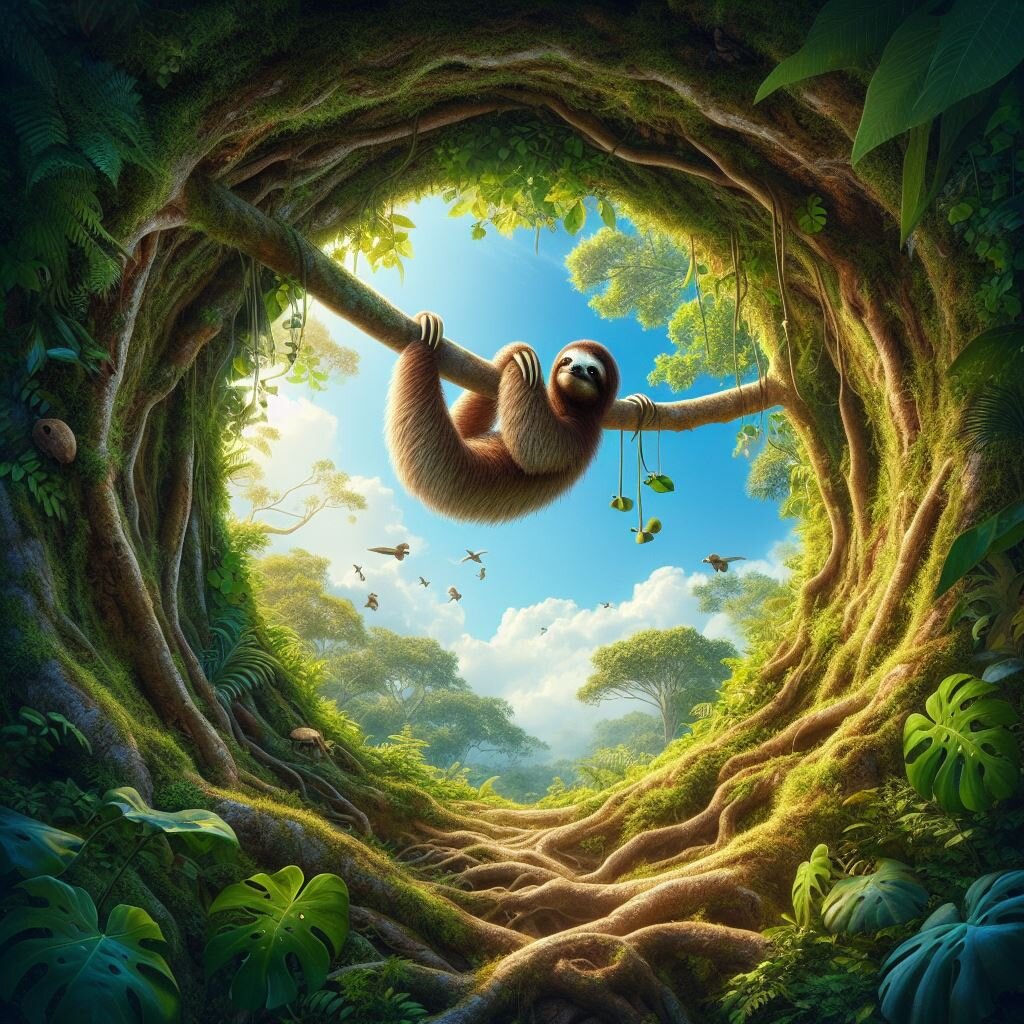The Ticuna Indians and their Messiah
There was a time when the Earth was all darkness and cold because of a samaum tree. The tree was so big that its canopy completely covered the sky, making it impossible to see what was on the other side. The God Yo’i then decided to throw fruit stones at the top of the tree. After several attempts, a hole formed in the crown, letting through a beam of light that touched the earth for the first time since the world was created. At this moment, the Yo’i God noticed that there was a sloth high up, clinging to a branch of the tree, intently spying on everything that was going on below. To scare the sloth away, Yo’i threw more lumps with redoubled energy, but the sloth didn’t move and the lumps touched the sky, turning into stars.
Dissatisfied with the difficulty of chasing the sloth away, Yo’i decided to get together with the God Ipi and they both decided to ask the animals of the forest for help. However, neither the tireless work of a woodpecker nor the use of an axe to cut the trunk of the tree had any effect: the scars made on the trunk of the samaum tree soon closed up and the tree remained standing. Finally, the gods sent fire ants to blind the sloth and it fell to the ground, along with the samaum tree. That’s how light flooded the face of the Earth, and the sun, sky and stars could finally be seen.
With the arrival of light, the world was finally invaded by colors and everything was filled with beauty. For Etüena, who was ecstatically following this transformation of the Earth, only one thing stood out: the fish. Although they swam swiftly through the waters of the rivers and streams, their scales reflecting the sun in a thousand points of light, the fish had no colors. Inconsolable, Etüena sat by the river one day, waiting for the piracema to appear. When the river began to teem with fish swimming upstream to mate, Etüena pulled them out alive one by one and painted their scales with colors that would never come off.
One day, seeing these colorful fish passing through the red waters of the Igarapé Eware, the God Yo’i decided to make a bait out of a cassava root and cast it into the waters with his fishing rod. As he fished, Yo’i transformed the fish into people, thus creating the first Ticuna Indians. The descendants of the Ticuna Indians lived for centuries and centuries happily and carefree in the jungles of the Amazon, occasionally fighting with the Indians of the neighboring tribes of the Alto Solimões region. Their clashes were over the possession of beautiful, fertile land where they could build their huts and grow their food. Nothing else concerned them in this world of God.
But one day, in the 17th century, the Ticuna Indians came into contact with the first white men who appeared on their land. They were Spanish Jesuit priests who came up the Solimões River in search of wild tribes that could be catechized. In the following years, numerous religious missions were founded on the banks of the rivers, but the success of the missionaries in turning the Indians away from devotion to their God Yo’i was relatively small.
It wasn’t until the end of the 19th century, when the Brazilian government granted the Ticuna land titles to white men, that the Indians were effectively subjugated. The white men wanted to invade their lands in order to extract latex from the rubber tree. At that time, the Amazon was experiencing rubber fever. Manaus reached its economic apogee, becoming one of the first metropolises in the world to have electricity. Its streets were soon overrun with street lighting and electric streetcars.
In the Alto Solimões region, latex extraction came to be dominated by a few families who created a monopoly by appropriating indigenous lands and enslaving the Ticuna who lived there. The invaders expelled the Indians from the malocas where they lived, and the clans were dissolved into small groups that lived scattered in the forest. Once subjugated, they worked to extract latex in exchange for superfluous items such as sugar, matches, perfume and cachaça.
All the Indians who refused to be subjugated by the captains of the barracks set up on their own land and did not want to work extracting sap or hand over to the whites the product of their fishing, or the manioc flour, skins and handicrafts they produced, were subjected to beatings and physical punishment for days at a time. During this time, they were locked up without food, chained in the basement of the barracks.
Finally dominated by force, the Ticunas came to believe that the God of the whites, Ipi, was indeed more powerful than their God, Yo’i, who had not been able to protect them from such suffering. They then agreed to be Christianized by Catholic and evangelical missionaries, in the hope that the God of the whites would free them from their suffering. The peak of the Indians’ conversion came when, in 1972, Brother José Francisco da Cruz arrived in Ticuna lands from Peru, announcing that the end of times was near.
Brother José da Cruz’s fame as a miracle worker was such that many Indians left their igarapés and went to the villages on the banks of the Solimões river to see his arrival. Little by little, a river procession formed to accompany him from village to village. José Francisco da Cruz’s long beard and the cassock he wore meant that he was mistaken for the image of Christ. Before long, word spread among the Indians that the one who would free the Ticunas from oppression had finally arrived.


